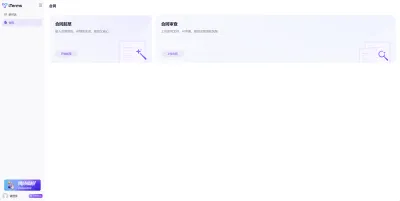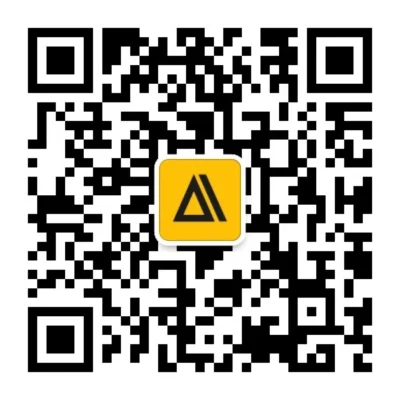Tether
<div> <a href="https://shipshape.io"> <img align="left" src="http://i.imgur.com/DWHQjA5.png" alt="Ship Shape" width="50" height="50"/> </a> </div>🐙 Project status 🐙
We at Ship Shape have recently taken over Tether's maintenance and hope to modernize and revitalize it. Stay tuned for updates!
Install
npm
npm install tether
For the latest beta:
npm install tether@next
download
Or download from the releases.
Introduction
Tether is a small, focused JavaScript library for defining and managing the position of user interface (UI) elements in relation to one another on a web page. It is a tool for web developers building features that require certain UI elements to be precisely positioned based on the location of another UI element.
There are often situations in UI development where elements need to be attached to other elements, but placing them right next to each other in the DOM tree can be problematic based on the context. For example, what happens if the element we’re attaching other elements to is fixed to the center of the screen? Or what if the element is inside a scrollable container? How can we prevent the attached element from being clipped as it disappears from view while a user is scrolling? Tether can solve all of these problems and more.
Some common UI elements that have been built with Tether are tooltips, select menus, and dropdown menus. Tether is flexible and can be used to solve all kinds of interesting problems; it ensures UI elements stay where they need to be, based on the various user interactions (click, scroll, etc) and layout contexts (fixed positioning, inside scrollable containers, etc).
Please have a look at the documentation for a more detailed explanation of why you might need Tether for your next project.
What to Use Tether for and When to Use It
Tether is a small, focused JavaScript library. For those who might be new to JavaScript, a library is simply a JavaScript file (or files) that contain useful JavaScript code to help achieve tasks easier and faster. Since Tether is a JavaScript user interface (UI) library, it contains code to help you to manage the way your website or web app appears.
Tether’s goal to is to help you position your elements side-by-side when needed.
Let’s say you’ve started working on your dream project—a fancy web app that’s sure to become the next big thing! An important feature of your new app is to allow users to comment on shared photos. However, due to limited vertical space and the overall layout of your new app, you’d like to display the comments next to the image, similar to how Instagram does it.
Your HTML code might look something like this:
<div class="container"> <img src="awesome-picture.jpg" alt="Awesome Picture" class="picture"> <div class="comments"> ... </div> </div>
Now, you could achieve this with some CSS using its position property, but going this route can be problematic since many of position’s values take elements out of the natural DOM flow. For example, if you have an element at the bottom of your HTML document, using position: absolute or position: fixed might could move it all the way to the top of your website in the browser.
Not only that, but you also have to make manual adjustments to ensure other elements aren’t negatively affected by the positioned elements. Not to mention, you probably want your comment box to be responsive, and look good across different device sizes. Coding a solution for this manually is a challenge all on its own.
Enter Tether!
After installing Tether and including it in your project, you can begin using it!
-
In your JavaScript file, create a new instance (or constructor function) of the
Tetherobject:new Tether({}); -
Within the curly braces (
{}) you can configure the library’s options. Tether’s extensive list of options can be found in the Tether documentation.new Tether({ element: '.comments', target: '.picture', attachment: 'top right', targetAttachment: 'top left' });
Now you have a perfectly placed comment section to go with your awesome picture! It’ll even stay attached to the element when a user resizes their browser window.
There are tons of other useful features of Tether as well, instead of “comment boxes” you could also build:
- Tooltips for useful hints and tricks,
- Dropdown menus,
- Autocomplete popups for forms,
- and more!
Usage
You only need to include tether.min.js in your page:
<script src="path/to/dist/js/tether.min.js"></script>
Or use a CDN:
<script src="https://cdn.jsdelivr.net/npm/tether@2.0.0-beta.5/dist/js/tether.min.js"></script>
The css files are not required to get tether running.
For more details jump straight in to the detailed Usage page.
Contributing
We encourage contributions of all kinds. If you would like to contribute in some way, please review our guidelines for contributing.
License
Copyright © 2019-2022 Ship Shape Consulting LLC - MIT License Copyright © 2014-2018 HubSpot - MIT License
编辑推荐精选


潮际好麦
AI赋能电商视觉革命,一站式智能商拍平台
潮际好麦深耕服装行业,是国内AI试衣效果最好的软件。使用先进AIGC能力为电商卖家批量提供优质的、低成本的商拍图。合作品牌有Shein、Lazada、安踏、百丽等65个国内外头部品牌,以及国内10万+淘宝、天猫、京东等主流平台的品牌商家,为卖家节省将近85%的出图成本,提升约3倍出图效率,让品牌能够快速上架。


iTerms
企业专属的AI法律顾问
iTerms是法大大集团旗下法律子品牌,基于最先进的大语言模型(LLM)、专业的法律知识库和强大的智能体架构,帮助企业扫清合规障碍,筑牢风控防线,成为您企业专属的AI法律顾问。


SimilarWeb流量提升
稳定高效的流量提升解决方案,助力品牌曝光
稳定高效的流量提升解决方案,助力品牌曝光


Sora2视频免费生成
最新版Sora2模型免费使用,一键生成无水印视频
最新版Sora2模型免费使用,一键生成无水印视频


Transly
实时语音翻译/同声传译工具
Transly是一个多场景的AI大语言模型驱动的同声传译、专业翻译助手,它拥有超精准的音频识别翻译能力,几乎零延迟的使用体验和支持多国语言可以让你带它走遍全球,无论你是留学生、商务人士、韩剧美剧爱好者,还是出国游玩、多国会议、跨国追星等等,都可以满足你所有需要同传的场景需求,线上线下通用,扫除语言障碍,让全世界的语言交流不再有国界。


讯飞绘文
选题、配图、成文,一站式创作,让内容运营更高效
讯飞绘文,一个AI集成平台,支持写作、选题、配图、排版和发布。高效生成适用于各类媒体的定制内容,加速品牌传播,提升内容营销效果。


TRAE编程
AI辅助编程,代码自动修复
Trae是一种自适应的集成开发环境(IDE),通过自动化和多元协作改变开发流程。利用Trae,团队能够更快速、精确地编写和部署代码,从而提高编程效率和项目交付速度。Trae具备上下文感知和代码自动完成功能,是提升开发效率的理想工具。


商汤小浣熊
最强AI数据分析助手
小浣熊家族Raccoon,您的AI智能助手,致力于通过先进的人工智能技术,为用户提供高效、便捷的智能服务。无论是日常咨询还是专业问题解答,小浣熊都能以快速、准确的响应满足您的需求,让您的生活更加智能便捷。


imini AI
像人一样思考的AI智能体
imini 是一款超级AI智能体,能根据人类指令,自主思考、自主完成、并且交付结果的AI智能体。


Keevx
AI数字人视频创作平台
Keevx 一款开箱即用的AI数字人视频创作平台,广泛适用于电商广告、企业培训与社媒宣传,让全球企业与个人创作者无需拍摄剪辑,就能快速生成多语言、高质量的专业视频。
推荐工具精选
AI云服务特惠
懂AI专属折扣关注微信公众号
最新AI工具、AI资讯
独家AI资源、AI项目落地

微信扫一扫关注公众号








